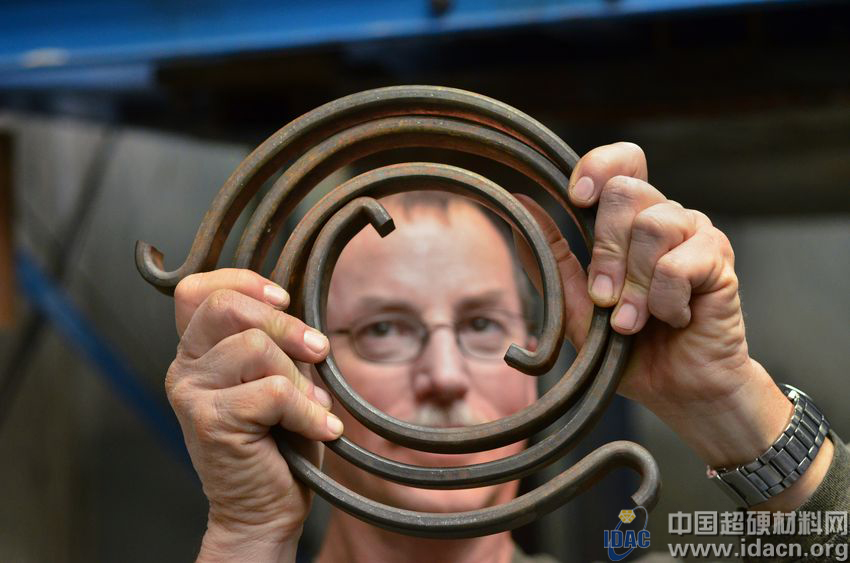Abstract Over two-thirds of the oil resources in the United States are extracted from wells drilled using PDC (Polycrystalline Diamond Compact) bits. These advanced drill bits were first developed more than 30 years ago with the goal of reducing the cost of geothermal drilling. In recent years, Sandia National Laboratories has partnered with the latest advancements in the oil and gas industry to explore how PDC technology can be adapted for geothermal applications.
This collaboration highlights the growing interest in leveraging existing technologies to enhance geothermal energy exploration. As part of the US Chocolate Mountain Geothermal Resource Assessment project, Sandia and the US Navy Geothermal Project Office (USN GPO) conducted a demonstration trial.

The team used a torsion spring to simulate the rotational vibration that occurs during actual drilling operations.
Sandia has over three decades of experience in geothermal research and bit technology development. They have played a key role in advancing PDC bits for geothermal exploration. Their work includes material testing, experimental design, and data collection, all of which have laid the groundwork for future innovations in drilling technology. Recently, Sandia received funding from the US Recovery and Reinvestment Act to improve PDC bits, aiming to make them more efficient for deep, high-temperature geothermal environments.
Dr. David Raymond, a researcher at Sandia, explained that PDC bits were originally designed for oil and gas drilling, where the geological conditions are generally less challenging. Oil and gas formations often consist of softer, more porous rock that doesn’t require liquid circulation to remove cuttings or cooling for the drill bit. However, as oil and gas drilling goes deeper, it faces similar challenges as geothermal drilling—harder rock, more debris, and higher temperatures.
Geothermal resources are typically found in igneous and metamorphic rocks, which are much harder than the sedimentary rocks common in oil and gas fields. These rocks also contain high levels of quartz, which is highly abrasive and can significantly wear down drill bits. The fragmented nature of these rocks increases the impact on the drill bit, leading to greater wear and damage.
Currently, geothermal drilling remains a costly and technically demanding process. Raymond noted that the US Department of Energy aims to achieve depths of 30,000 feet through improved drilling technologies, opening up new geothermal resources. However, economic risks remain high. Unlike oil and gas, where large-scale developments provide steady returns, geothermal projects face limited opportunities. Each geothermal well requires significant investment, and there's always a risk that the project may not yield enough energy to justify the cost.
The Sandia project takes place at the Bilima Camp Mine, which features granite and andesite—common rock types in geothermal drilling. A major focus of the project is testing and evaluating PDC bits under real-world drilling conditions.

Workers inspecting the original PDC bit on the drilling equipment
NOV, a leading manufacturer of PDC bits, collaborated on the project, providing technical support and expertise. Barbour, a drilling contractor, also participated in the field tests. During the trial, two PDC bits drilled 1,291 feet in a 3,000-foot-deep well at a rate of 30 feet per hour. This was three times faster than the control cone bit in the control group. However, the PDC bits only lasted four days before becoming worn out.
In the next phase of the project, Sandia will continue working with NOV to analyze the performance of the PDC bits and refine their design. The project is funded by the US Recovery and Reinvestment Act and is supervised by the EGS Drilling Systems Technology Development and Field Experiments team. (Based on “Polycrystalline diamond drill bits open up options for geothermal energyâ€; Translation: Wang Xian)
Car Air Conditioning Pipe Crimping
ZHEJIANG KINGSIR VALVE CO., LTD. , https://www.cn-kingsir.com

